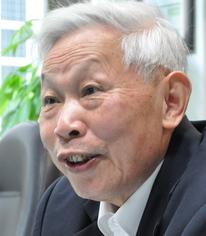This letter from Kathy Zhang, the founder and managing director of Financial PR, Singapore's largest investor relations company, was published in the Business Times today.

SENTIMENT TOWARDS S-chips has plunged sharply recently due to the account irregularities spotted on three S-chip companies, namely China Hongxing, Hongwei Technologies and China Gaoxian. This has once again shaken investors' confidence in the S-chip sector.
The key question for us as investor relations practitioners has always been how to help investors differentiate good companies from the bad.
Perhaps investors should pay attention to some 'investor friendly' measures to cherry-pick good companies. In particular, they should consider if the company has a habit of paying dividends, understand the impact of doing share buybacks, and whether its major shareholder understands the signalling effect of open market purchases by insiders.
Take the example of the largest S-chip on Singapore Exchange, Yangzijiang Shipbuilding, which recently proposed a final dividend of 4.5 cents for fiscal 2010, equivalent to 30 per cent payout ratio.
If one digs deeper, it is not difficult to notice the impeccable dividend track record of Yangzijiang. Since its listing on SGX in 2007, Yangzijiang has paid out cash dividends of $51 million on FY2007 earnings, $102 million on FY2008 earnings, $128 million on FY2009 earnings, and $173 million (proposed) on FY2010 earnings!
Even during the last financial crisis, Yangzijiang conducted persistent share buybacks from March to December 2008 at an average price of below $0.42. Both the dividend payouts and share buybacks have given Singapore investors greater confidence in the strong cash-generating nature and future growth of Yangzijiang's business.

Even a newly listed company like Anchun International understood the importance of investor friendly measures. Although no formal dividend policy is stated in its IPO prospectus, the company voluntarily proposed a maiden dividend of 0.7 cents for FY2010.
Another S-chip worth mentioning is C&G Environmental Protection, which just announced a dividend policy to distribute at least 20 per cent of its operating profit excluding one-off items to shareholders for the next three years. Other companies such as Pan Hong, Sunpower, Hu An Cable and 8Telecom have proposed final dividends for the latest financial year to reward shareholders for their support.
I believe the market notices such efforts. Perhaps, it is time for the media, investor-relation professionals, independent directors as well as corporate advisers to encourage more S-chip companies to implement some of these measures on a sustainable basis. This will help to separate the good S-chips from the not-so-good ones and renew investors' confidence in the S-chip cluster.
Kathy Zhang
Group managing director
Financial PR Pte Ltd







